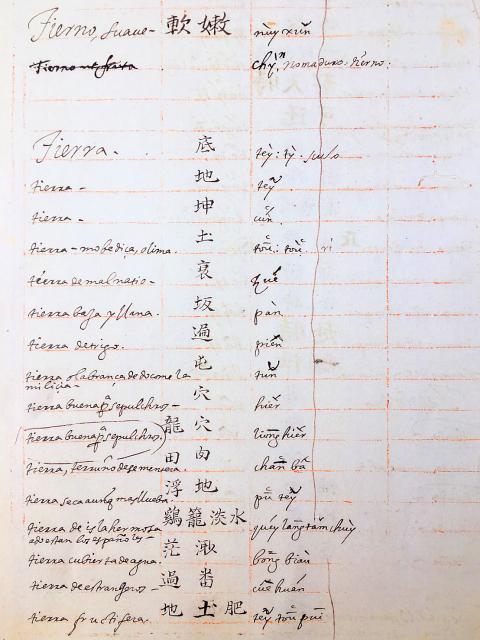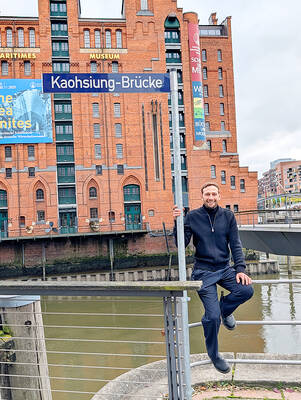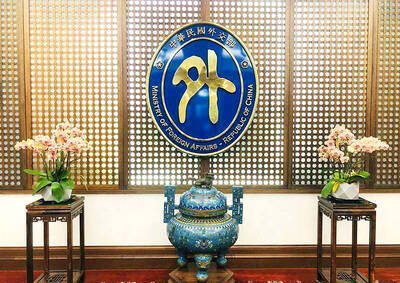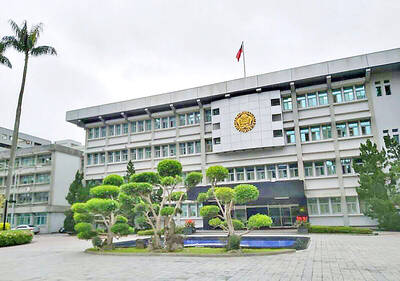A research team composed of Taiwanese and Spanish researchers yesterday discovered a lexicon that provides important clues about the development of Hoklo (commonly known as Taiwanese) in Taiwan during the 17th century.
The researchers said the 1,000-page lexicon titled The Vocabulary of the Language of Changchou (漳州話詞彙) contains 20,000 entries of words in use at the time of the Spanish occupation of Taiwan in 1620.
Researchers discovered the text while conducting research at the University of San Tomas in Manila.

Photo: Yang Chin-chieh, Taipei Times
Academia Sinica assistant researcher Chen Tsung-jen (陳宗仁) said the government’s “new southbound policy” is not a new idea, citing the travels of Hoklo speakers from southern Fujian Province to what is now the Philippines and Indonesia more than 400 years ago.
Chen said the text gives insight into what those Hoklo speakers encountered on their travels, adding that the text also provides evidence that the development of Hoklo stabilized at around that period in history, as it contains many expressions that are still in use.
“Hoklo has more than 1,000 years of history, having been in use since just after the Song dynasties. It is a shame to call it simply a ‘dialect.’ It has speakers in the Philippines, China, Malaysia and Singapore, and provides an important link with Southeast Asia,” Chen said.
National Tsing Hua University Department of History associate professor Lee Yu-chung (李毓中) said the text could also explain commonly misunderstood Hoklo terms.
The definitions are written using a combination of romanized Hoklo, romanized Mandarin, Chinese characters and Spanish, Lee said, adding that one-third of the definitions include annotations written using the official local language of the time.
“These annotations will really help with understanding the overall content,” Lee said.
Some expressions found in the text such as “washing one’s front door’s lintel” (se bun hong, 洗門風), meaning to publicly shame oneself out of regret over damaging another person’s honor, and the Hoklo term for “tears” (bak sai, 目虱) are still in use today, while other expressions found in the text are defined slightly differently from modern usage, Chen said.
The text also provides evidence about Spanish perceptions of the island, citing references to Keelung and Tamsui as “Spanish territory on Isla Hermosa,” he added.
“In the future when films are made about The Kingdom of Tungning, we will know how to portray certain behaviors and how to write dialogue for those cursing at others,” Chen said, adding that it also helps with understanding differences in Hoklo between Taiwan and Southeast Asia.
The team, which includes researchers from Academia Sinica, National Tsing Hua University, Spain’s University of Seville and Pompeu Fabra University in Barcelona, said the text represents the most comprehensive material discovered so far on 16th and 17th-century Hoklo vocabulary.

The German city of Hamburg on Oct. 14 named a bridge “Kaohsiung-Brucke” after the Taiwanese city of Kaohsiung. The footbridge, formerly known as F566, is to the east of the Speicherstadt, the world’s largest warehouse district, and connects the Dar-es-Salaam-Platz to the Brooktorpromenade near the Port of Hamburg on the Elbe River. Timo Fischer, a Free Democratic Party member of the Hamburg-Mitte District Assembly, in May last year proposed the name change with support from members of the Social Democratic Party and the Christian Democratic Union. Kaohsiung and Hamburg in 1999 inked a sister city agreement, but despite more than a quarter-century of

The Ministry of Foreign Affairs (MOFA) yesterday expressed “grave concerns” after Singaporean Prime Minister Lawrence Wong (黃循財) reiterated the city-state’s opposition to “Taiwanese independence” during a meeting with Chinese Premier Li Qiang (李強). In Singapore on Saturday, Wong and Li discussed cross-strait developments, the Singaporean Ministry of Foreign Affairs said in a statement. “Prime Minister Wong reiterated that Singapore has a clear and consistent ‘one China’ policy and is opposed to Taiwan independence,” it said. MOFA responded that it is an objective fact and a common understanding shared by many that the Republic of China (ROC) is an independent, sovereign nation, with world-leading

Temperatures in northern Taiwan are forecast to reach as high as 30°C today, as an ongoing northeasterly seasonal wind system weakens, the Central Weather Administration (CWA) said. CWA forecaster Tseng Chao-cheng (曾昭誠) said yesterday that with the seasonal wind system weakening, warmer easterly winds would boost the temperature today. Daytime temperatures in northern Taiwan and Yilan County are expected to range from 28°C to 30°C today, up about 3°C from yesterday, Tseng said. According to the CWA, temperature highs in central and southern Taiwan could stay stable. However, the weather is expected to turn cooler starting tonight as the northeasterly wind system strengthens again

The Ministry of Justice Investigation Bureau (MJIB) has been investigating nine shell companies working with Prince Holding Group, and the Taipei District Prosecutors’ Office is seeking further prosecution of alleged criminals, a source said yesterday. The nine companies and three Taiwanese nationals were named by the US Department of the Treasury’s Office of Foreign Assets Control (OFAC) on Oct. 14 as Specially Designated Nationals as a result of a US federal court indictment. Prince Holding founder Chen Zhi (陳志) has been charged with fraud, conspiracy, money laundering and overseeing Prince Holding’s suspected forced-labor camps in Cambodia, the indictment says. Intelligence shared between Taiwan,